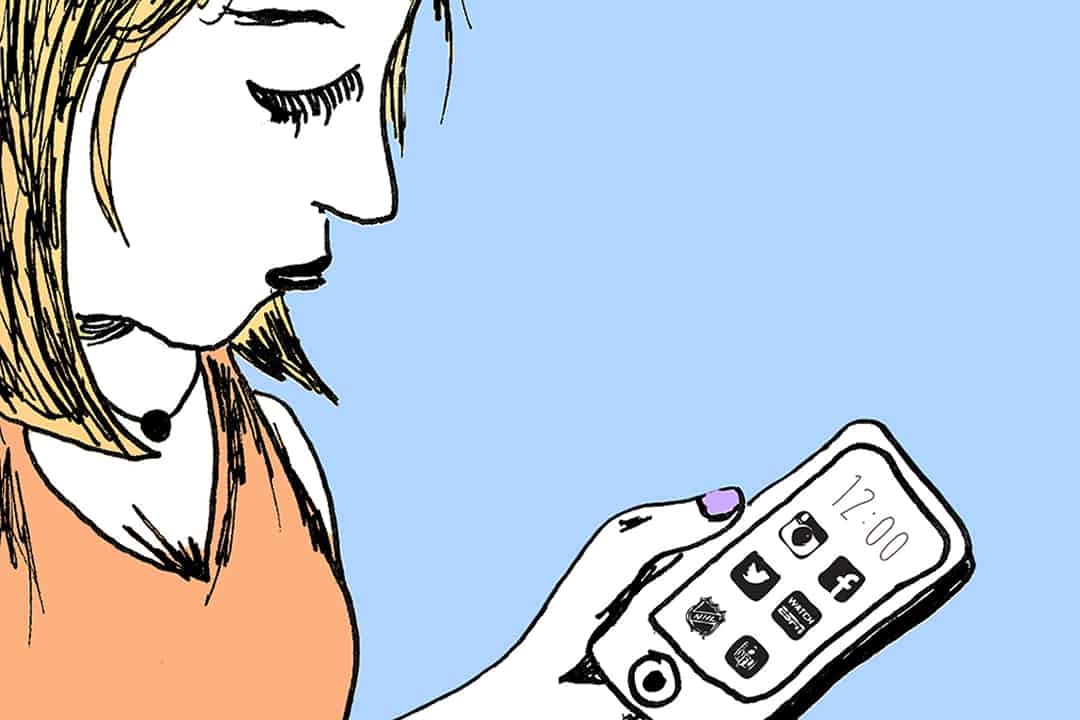Before the COVID-19 lockdown, I tried TikTok once and I thought “interesting, but I’m above it.” In truth, I was an anxious abstainer unwilling to confront my age and the possibility that I wasn’t inherently cool anymore. However, I returned to the video-sharing app in a moment of physical distancing weakness and I quickly became addicted.
While it is a great place to connect with others and feel a sense of community, the platform has become host to an alarming amount of misinformation regarding fitness and diets. My ‘For You’ page features content focused on weight loss over health: workouts for “super easy” thigh reduction, “what I eat in a day” videos, and hacks to “lose six pounds in two days” — all of which highlight a widespread ideal that ‘thin is best.’
As someone who struggled with disordered eating as a teenager, the ease at which these videos can reinforce harmful understandings of physical and nutritional health is glaringly obvious. Sixty per cent of TikTok’s users in the US are between the ages of 16 and 24 — add that to being stuck at home, the need to maintain a semblance of control in the midst of a global pandemic, and the free time to compare oneself to popular creators, and you have the perfect storm to fuel a resurgence of eating disorders.
Audiences are increasingly looking to online media resources for information and advice. Clea Skopeliti and Bethan John of First Draft have recorded how social media platforms have grappled with discovering, mediating, and deleting harmful content that spreads misinformation amongst the COVID-19 pandemic in their series on health misinformation.
It is time to extend the same attention to content that encourages eating disorders due to lack of scientific data, certified training, and minimal fitness knowledge.
The surge of potentially harmful content on TikTok is indicative of the failure of their community guidelines, which claim that, “content that promotes eating habits that are likely to cause health issues” is not allowed. Videos may slip through filters because their content is not overtly or intentionally harmful. For instance, creators with ‘ideal’ bodies often release workout and “what I eat in a day” videos because they receive a large number of comments asking them to.
Although sharing may come from a place of good intent, this advice is often founded by the advice of other teenagers and minimal health and fitness knowledge. Other examples include the surge of videos showing ‘skinny’ tea and other miracle drink recipes promising weight loss, and the popular “so you think I’m skinny” and “weight loss check” sounds.
TikTok’s For You page — a tailored stream unique to each user that acts as a landing page for content — magnifies the reach of the harm and body image issues that misinformation can cause, as compared to other social media platforms.
The company recently wrote about the workings of the algorithm behind the For You page: “Our goal is to find balance between suggesting content that’s relevant to you while also helping you find content and creators that encourage you to explore experiences you might not otherwise see.”
It will show you a variety of videos, regardless of whether they are aligned to your interests or not, and then develop a stream of content based off of signals collected by artificial intelligence aimed to maximize user engagement.
Many studies have found that debunking misinformation is unlikely to be effective in changing people’s attitudes once the information has already been spread. TikTok’s current regulations do not do enough to filter videos that encourage eating disorders, offer dangerous exercise advice, and promote feelings of body shame.
Given its prominence in popular culture, TikTok should take the initiative to set an example and create new standards in the tech industry that do not encourage such trends.


